
There are quite a few expedition vehicles on the worldwide market--Unicat, ActionMobil, EarthRoamer, Global and BlissMobil to name just a few-- and EarthCruiser director Lance Gillies is first to admire the engineering in play. But what makes the EarthCruiser EXP different is it goes from in-use camper to in a container ready for shipping in a matter of minutes—lower the top, switch off the batteries, empty anything left in the fridge and clamber out. Cost for recently shipping his rig home to the west coast from Malaysia, $2500.
We got a chance to spend some time in, around and driving Gillies’ personal EXP recently, and can attest is was comfortable lounging within on a sunny warm day, Lance and his wife were equally comfortable that same night in a blizzard and it’s as easy to drive as a full-size pickup.
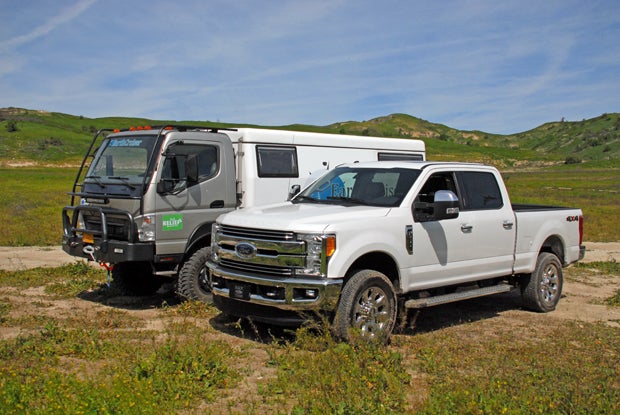
EarthCruisers come in two wheelbases, and if crossing oceans isn’t on your list there’s a fixed-top model. This long-wheelbase version is 134 inches, splitting the difference between F-150 regular cab 6.5- and 8-foot beds, about 21 feet long, an inch wider than the average full-size and just shy of 100 inches high, roof retracted. The 112-inch short wheelbase gives up dinette seating space and you could put two of those in one container to halve the cost. Approach angle is just shy of 45 degrees, departure a bit more than 40 (and it’s the hitch) and breakover is 22 or better, all fair numbers considering this isn’t a rock crawler.
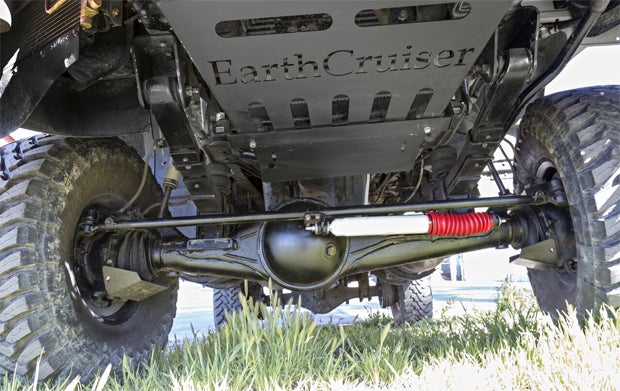
They’re built on a Fuso 4x4 chassis sold in 70 countries and owned by Mercedes-Benz, so there’s usually a place to start with a part number if something goes awry. In EarthCruiser’s early days of the eight chassis that would fit the container rule, Fuso and Isuzu emerged the top two with easily found replacement windshields, and the Fuso was chosen because it runs a wider, smaller diameter brake shoe that fits a 16-inch wheel and the Isuzu was 17.5-inch wheels and usually a 24-volt DC system.
Related: 5 Incredible Overland Camping Photos
EarthCruiser was developed in Australia where it’s considered a secondary manufacturer, and the unit gets a new VIN on completion. Frames had to be wrecked to prove the receiver hitch/bumper assembly worked, a cab had to be crushed to prove the new seats worked, and since the conversion legally made a car out of a truck, the exhaust had to be extended well beyond the rear axle because there’s an opening window aft in the house section. Even the high-level rear lights are EU legal, more of a headache than you expect, and the EarthCruiser is fully compliant in respective markets.
Now based and built in Bend, Oregon, the EarthCruiser has no parts from China and even the lithium batteries are from the U.S. Fiberglass house panels come from an aviation supplier so weight’s not an issue, switching/cabling is marine grade, and the house is covered by a two-year back to base structural and one-year workmanship warranty, most components have a two-year international warranty and the truck is warranted by Fuso. The one we drove was 13 years old and there was no evidence of recent repair—though the body could use a buff and wax.
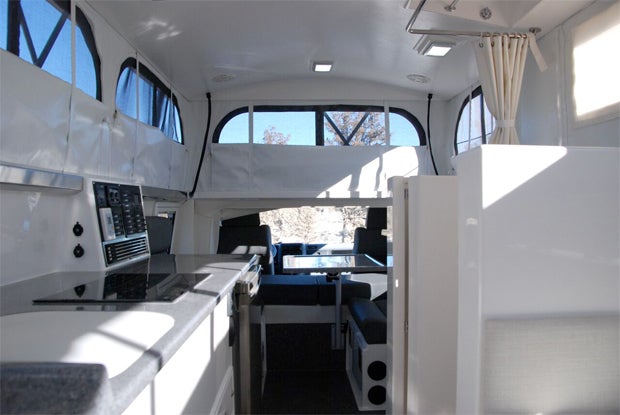
Layout is much as you’d expect with dinette forward, galley driver side opposite the entry/bath area, and a transverse queen bed aft with storage everywhere it’s available. The cassette toilet slides out just inside the entry door in the space that doubles as the shower pan, with a proper teak grate. With tanks full it weighs in about 12,500 pounds, leaving 1500 for payload, so physical space is more an issue that weight. It holds 33 gallons of diesel with an option for 41 more, 20-gallon gray tank and 80 gallons of fresh; the water system can suction water out of a creek to refill fresh and the purification can recycle gray if needed.
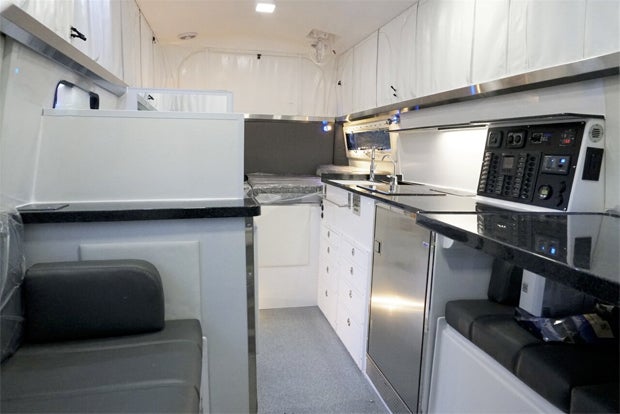
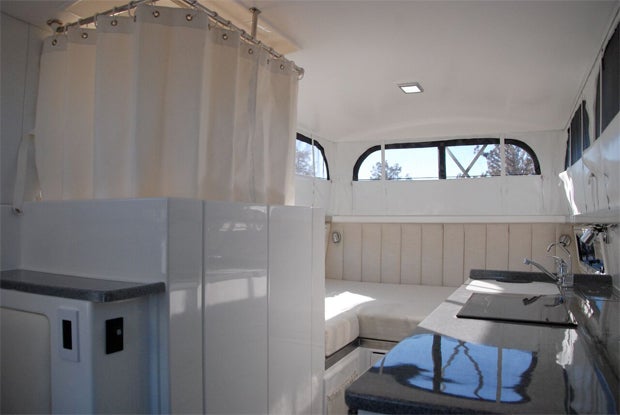
The house runs on batteries charged by hail-proof solar panels or the truck’s standard alternator, and an inverter—it generates sufficient solar power that in some places it qualifies for house solar incentives. Despite an electric fridge (it has to work at all angles) Lance reports they can run the house for three to four days on battery even in a low-lying winter sun, and this unit had the optional lithium batteries which they prefer for straight-line voltage and faster recovery. Both Warn 16.5ti winches on this truck run off the house batteries. Diesel fuel provides hot air (including house tanks) and hot water, and runs the cooktop.
A battery management system switchable in house or in the cab prioritizes the two AGM chassis batteries—Lance is all about “saving the truck.” It automatically charges and floats all of them, but if it’s a choice between starting the truck or heating the house the truck wins. Virtually all of it can be manually overridden.
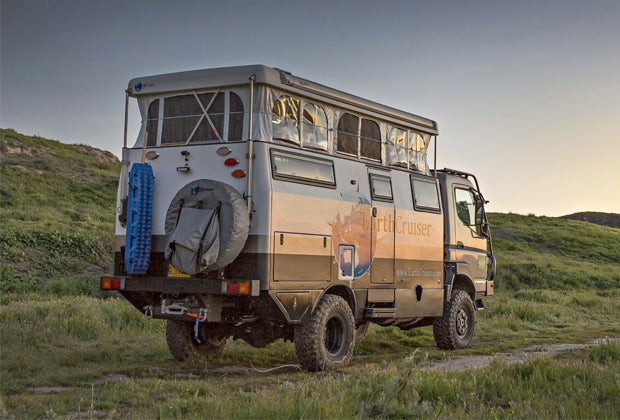
Four electric worm screws lower and raise the roof, though everything inside is accessible whether it’s up or down. The multi-layer canvas between the hard top and house sides automatically folds in and didn’t so much as flutter in a moderate breeze, and I was also amused how little the coach moved in a crosswind or with people moving around since there are no leveling jacks.
Since flex is better for wheeling than it is for fiberglass boxes, the spring-mounted subframe for the house allows six inches of flex between it and the chassis. The chassis is upgraded with custom leaf springs with grease-able pivot points and stouter, longer-travel remote-reservoir shocks; there are no antiroll bars, the concept of one on a leaf-sprung axle so foreign to an Aussie he was surprised to hear some manufacturers do that. The factory 4WD system runs a tight clutch-pack limited-slip in back and a Torsen front diff is optional.
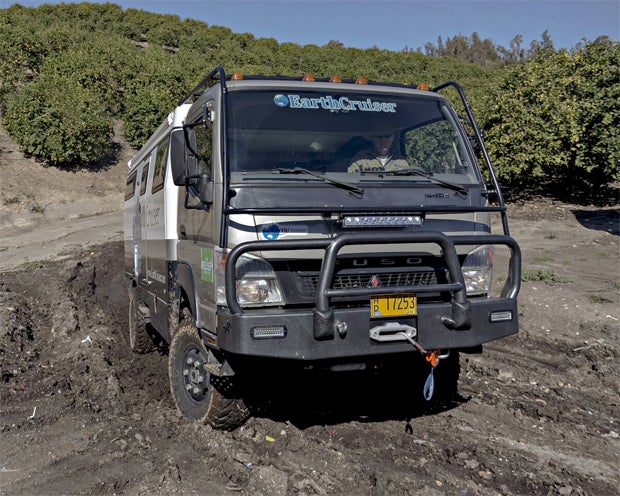
Custom 16x8 alloy wheels are the same at every corner, mounted reversed in back so track is the same at both ends, carrying Toyo Open Country M/T LT315/75R16E 127Q tires—those and Michelin the only two of 11 considered that passed testing. Since the EarthCruiser is well balanced (the fuel tank was moved—more testing) the 3860-pound max at 65 psi isn’t needed and Lance runs 55 normally, 18-22 the sweet spot in the sand.
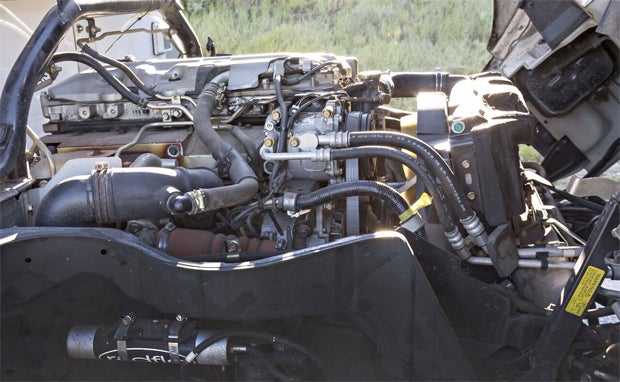
Current models are powered by a 3-liter inline-4 turbodiesel rated 161 hp @ 3400 and 295 lb-ft @ 1600 (a derivative of the Ram ProMaster diesel), six-speed automatic and 5.28:1 or 5.71:1 gears; no low-range is offered on the new one, as the lowest gear effectively matches the test truck’s. That may change by the end of the decade, as the engine arrangement expires and a Mercedes diesel finds its way under cab.
This 2004 model is powered by a Mitsubishi 4.9-liter inline-4 turbodiesel (175 hp/391 lb-ft), exhaust brake by flipping the right column stalk (wipers, etc.) up, five-speed manual with non-syncro first and low-range operated by an upright handbrake-style lever left of the steering wheel. It’s quite smooth for 1225 cc/cylinder and revved happily to near 3000 because it uses balance shafts, a century-old system first used by Lanchester that Mitsubishi began using more than 40 years ago.
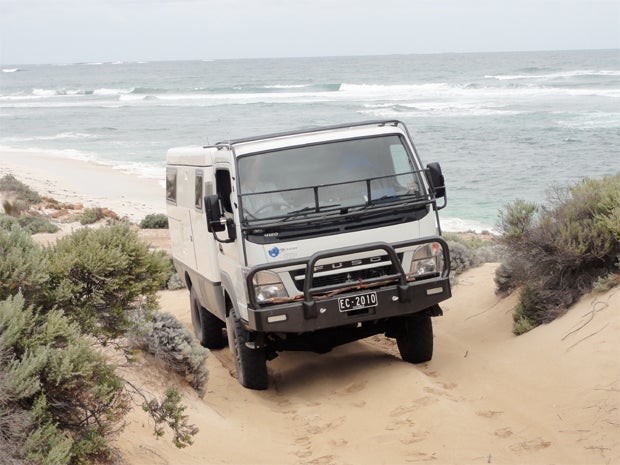
Low-low in this truck is a good creep but there were no rocks on my course that necessitated using it; the stop-to-engage first gear high was plenty for waltzing up inclines or nosing over them, throttle rarely called for. Here or on the winding road it doesn’t feel top heavy, showing the advantage of good balance and no weighty glass, cabinets or flat-screen up high, and the view is fabulous.
The dash shifter abutment reminds of a Honda, the throws shorter than anticipated but horizontal travel more, and moderate effort for 14,000+ GVWR. Clutch and steering are no heavier than a same-year pickup, and the 44-foot turning circle (curb-to-curb, which could be a foot high) bests many of them. Disregard first gear on the road and EarthCruiser gathers momentum at a moderate pace—you can’t spin up huge pistons that quickly and you don’t want to shake up the beer—to a maximum speed around 70 mph. It’ll do that all day and it’s well within the tires’ capability, the singing no more than M/T average.
They sweat the details at EarthCruiser--note the dual sink drains on opposite sides for when you’re not level, or the spare cabling installed so you won’t mess anything up adding something later—so they aren’t cheap: figure $265,000 with lithium batteries, Warn winch, etc. If you prefer to source your own Fuso for whatever reason, knock off about $45,000.
MORE OVERLANDING STORIES
What is Overlanding?


 Your Privacy Choices
Your Privacy Choices